Excerpts from Jim Conrad's
Naturalist Newsletter
from the January 1, 2017 Newsletter issued from Rancho Regenesis in the woods ±4kms west of Ek Balam Ruins; elevation ~40m (~130 ft), N20.876°, W88.170°; north-central Yucatán, MÉXICO
HAIRY SENNA
When I first saw the garden, it was a weedy wasteland. I went there to pull weeds to feed to the burros, and only as the weeds disappeared did old plant beds and sweet-potato ridges turn up. Among the weeds was a rankly growing, yellow-flowered, waist-high, shrubby member of the Bean Family, a branch of which is shown below:
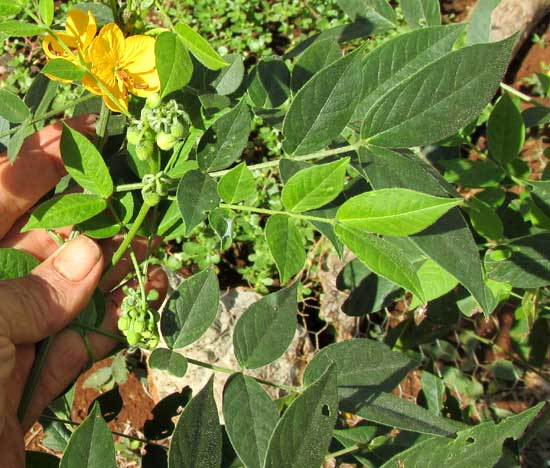
Below, a close-up of its weakly bilaterally symmetrical flowers featuring stamens very unlike one another:
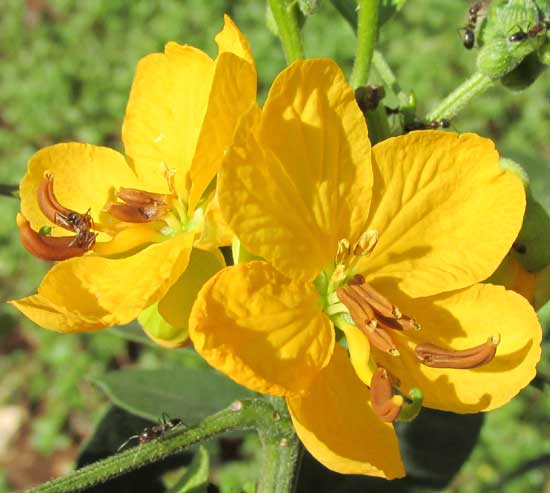
We've seen that flowers displaying these features normally belong to the big Bean Family genus Senna. We've identified several weedy and shrubby species of this genus, so I assumed that this was one of them. Senna species often attract ants by means of conspicuous glands on the leaves' petioles, but in this species the ants seemed to cluster around hairy, emerging stem tips.
I couldn't remember another Senna species with such an ant-attracting policy, and I didn't see the species in the woods around the garden, so maybe this wasn't a repeat after all. I set about noticing distinguishing features that might help during the upcoming identification process. For example, notice how the blossoms' sepals differ from one another in size, that they're broader toward their tips instead of at their bases, and that the sepals' tips are rounded instead of pointed, as shown below:
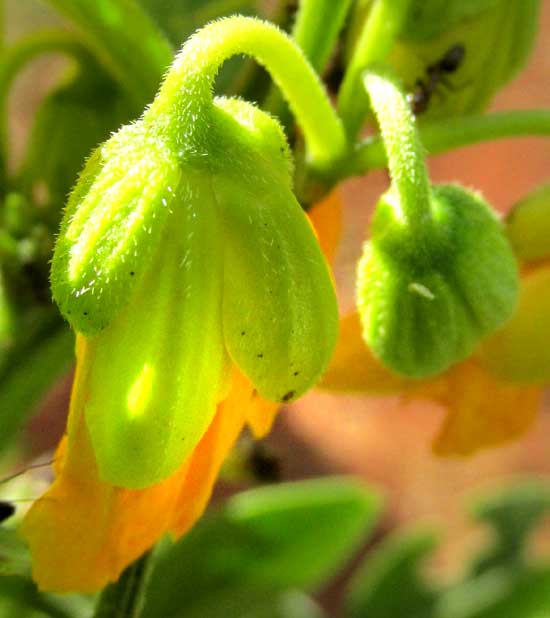
Also, it was a little unsual that both sides of the little bush's leaflets were softly hairy, as shown below:
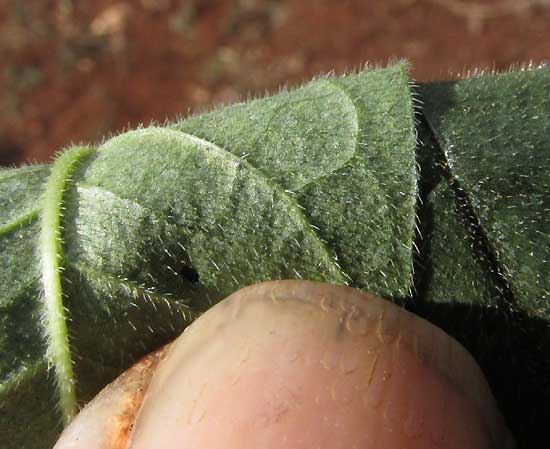
This seems to be the Hairy Senna, SENNA HIRSUTA, sometimes also called the Woolly Senna, Stinking Cassia, and a host of other names. It bears so many names because it's a fairly common species apparently native throughout the tropical and subtropical Americas, including the southern US and Mexico, plus it's invasive in numerous other countries with hot to generally warm climates. Occurring over such a large distribution area, it's a very variable species. The long-pointed leaflet tips shown in our photos turn up as rounded tips in pictures of the same species from other countries.
We've seen that here at the rancho numerous plants have been introduced for one good reason or another, but eventually the species' names and original purposes were forgotten, and now the plants are surviving as weeds. I think that that's the case here. Hairy Sennas frequently are planted as "green manure" to be plowed under to enrich the soil, and often they're planted as shade or shelter plants in young coffee plantations. Though Hairy Sennas are native to this area, the plants in the garden probably they were introduced as ground cover that puts nitrogen into the soil.
from the February 19, 2017 Newsletter issued from Rancho Regenesis in the woods ±4kms west of Ek Balam Ruins; elevation ~40m (~130 ft), N20.876°, W88.170°; north-central Yucatán, MÉXICO
HAIRY SENNA IN FRUIT
Nowadays the Hairy Sennas are fruiting, shown below:
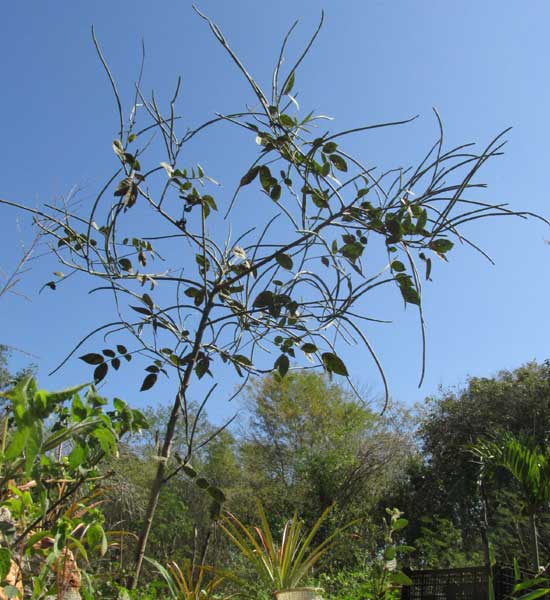
In that picture all the long, slender, slightly curving items along the plant's perifery are legume-type fruits bearing many tiny beans. The picture also explains one of the plant's many other common names, which is Sicklepod.
By the way, in the background you can see that as the dry season starts to bear down more and more deciduous trees are losing their leaves, imparting to the forest an open, airy feeling. On the average, now as the days grow longer and the Sun climbs ever higher in the sky, temperatures will increase until May, which normally is our hottest and driest, most physically challenging month. Then the rainy season will begin, we hope, and clouds will moderate the temperatures a little.